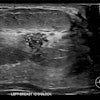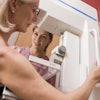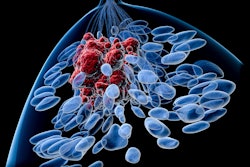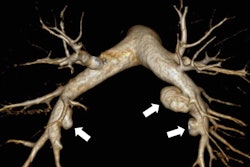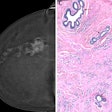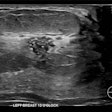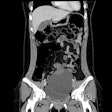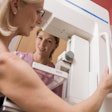Curve-shaped breast compression paddles may lead to some pain relief, but they also reduce image quality on mammograms, suggest findings published on 20 August in Radiology.
Researchers led by Daniëlle van der Waal, PhD, from the Dutch Expert Centre for Screening in Nijmegen, the Netherlands found that, compared with standard mammography compression paddles, curved paddles led to slight decreases in pain scores as reported by female patients. But the paddles also decreased image contrast and the visibility of structures.
“Overall, these results seem to indicate an unfavorable benefit-to-risk ratio regarding the introduction of the curved paddle in Dutch breast cancer screening,” van der Waal and co-authors wrote.
Researchers over the years have studied methods to effectively reduce compression pain experienced by women undergoing mammography while also maintaining image quality. One recent effort involves a curve-shaped compression paddle, with the idea of the paddle conforming to a patient’s breast shape leads to more comfort.
A small manufacturer-led study found that this paddle led to reduced discomfort and noninferior image quality compared with standard paddles. But the van der Waal team noted that validation is needed through large study cohorts and that comparative studies on pain experiences should consider the placebo effect.
The researchers performed their randomized sham-controlled study to compare curved and standard compression systems in terms of pain experience and image quality at mammography screening. They introduced a sham paddle to women in the study, which was a standard paddle that was presented as a new paddle.
Final analysis included data collected in 2021 and 2022 from 2,499 women with an average age of 61.6 who were screened at three sites in the Netherlands. Of the total cohort, 1,250 were randomized to the curved-paddle group and 1,249 were placed in the sham-paddle group.
The team measured pain on a 0-to-10 scale, with the women providing a pain score after compression with both paddles. This resulted in two scores per participant. Two radiographers and two radiologists performed unblinded paired comparisons of images from both paddle types, using standard image quality criteria.
On adjusted analysis, the curved-paddle group experienced an average decrease in pain score of 0.19 points compared with the sham-paddle group (p < 0.001). For women whose experience with the standard paddle was “very painful,” the curved paddle led to an adjusted decrease of 0.3 points on the pain scale.
However, the radiologists and radiographers differed in preference when it came to image quality. The two radiographers showed agreement for preference toward the standard paddle for craniocaudal images when it came to imaging the pectoral muscle and having better contrast in dark areas. On mediolateral oblique images, they preferred the standard paddle for the following criteria: pectoral muscle deeper, better depiction of area around the nipple, nipple in profile, better contrast in light areas, and better contrast in dark areas.
Among the two radiologists, there was only agreement on a significant preference for the standard paddle for better contrast in light areas on both craniocaudal and mediolateral oblique images. The researchers also noted no significant preference for the curved paddle for any of the criteria for the four observers.
The study findings suggest that a placebo effect in this screening population was “present but minimal," the authors explained.
“The idea that a new technique was used resulted in only a small pain reduction,” they wrote.
The full results can be found here.

